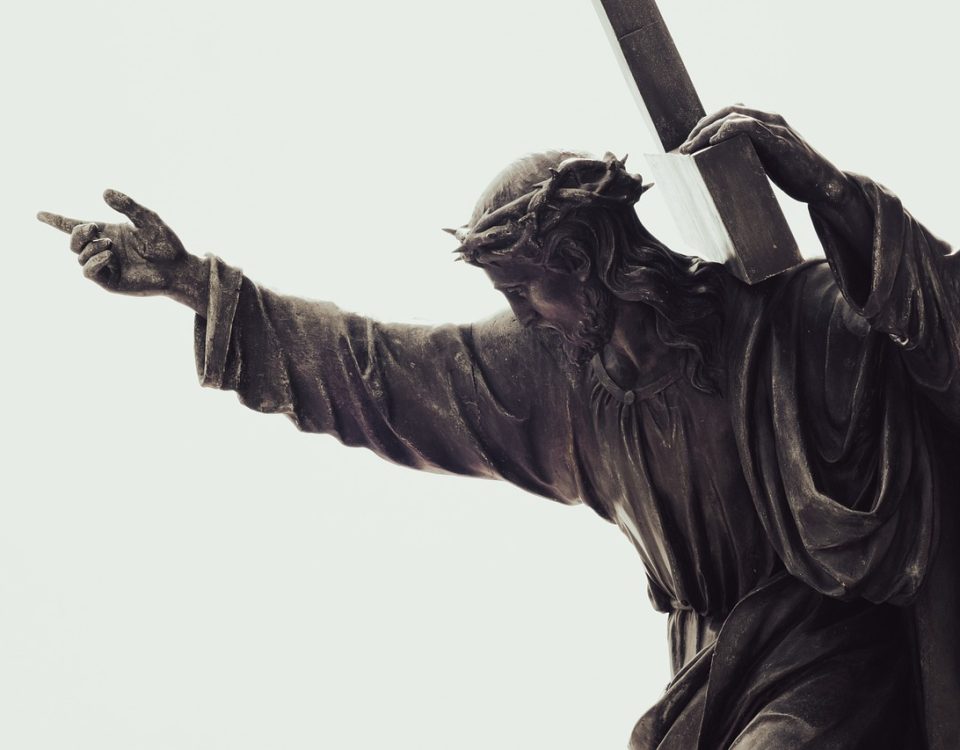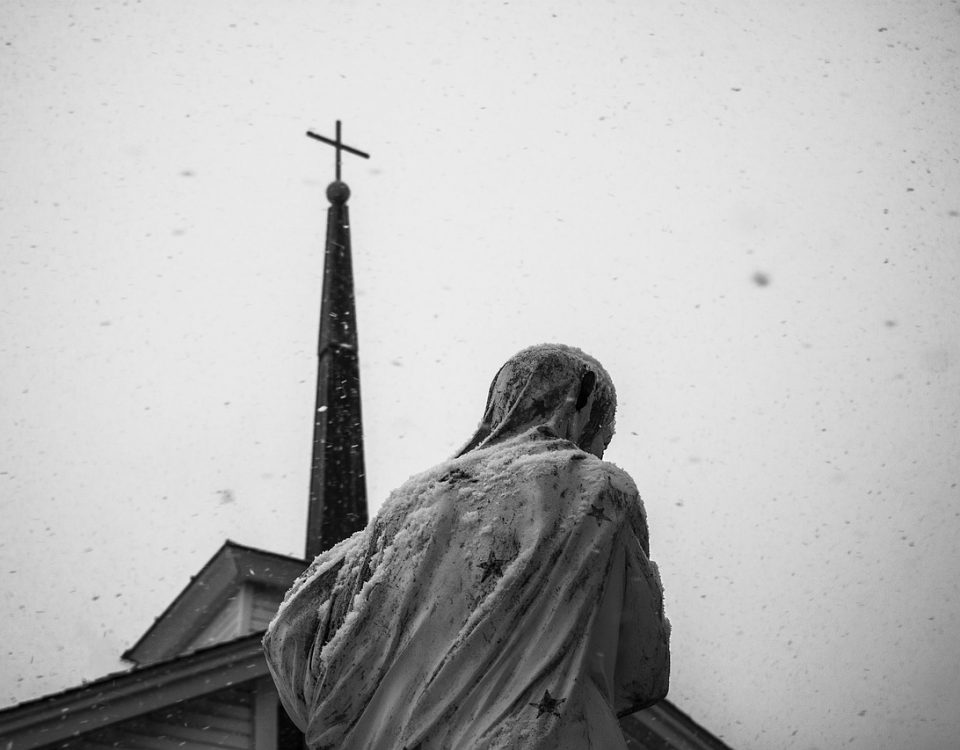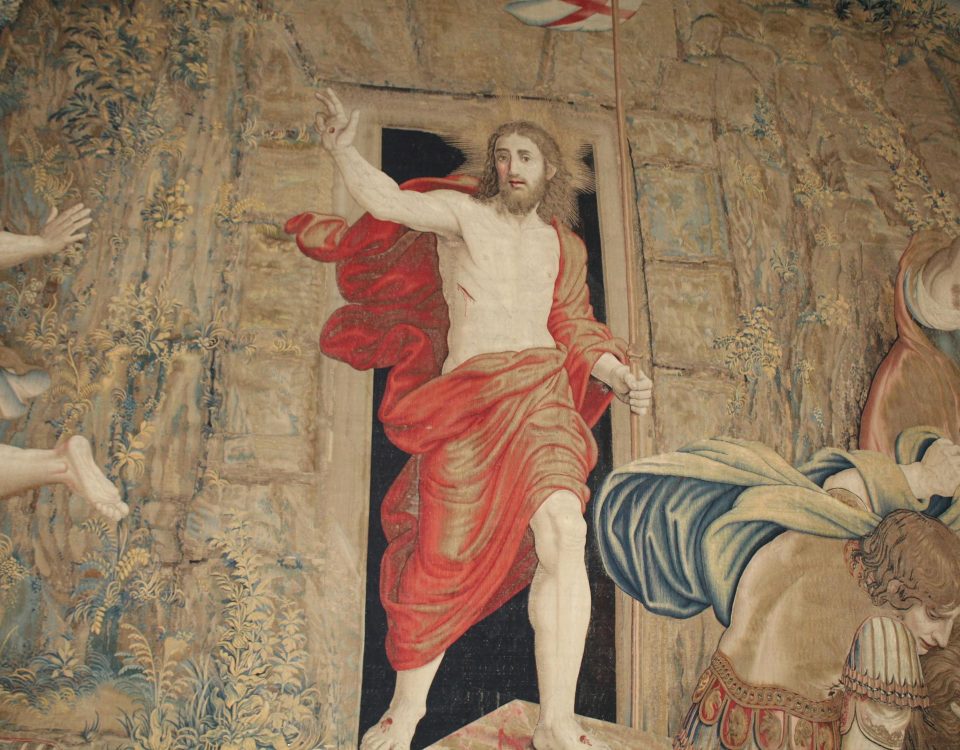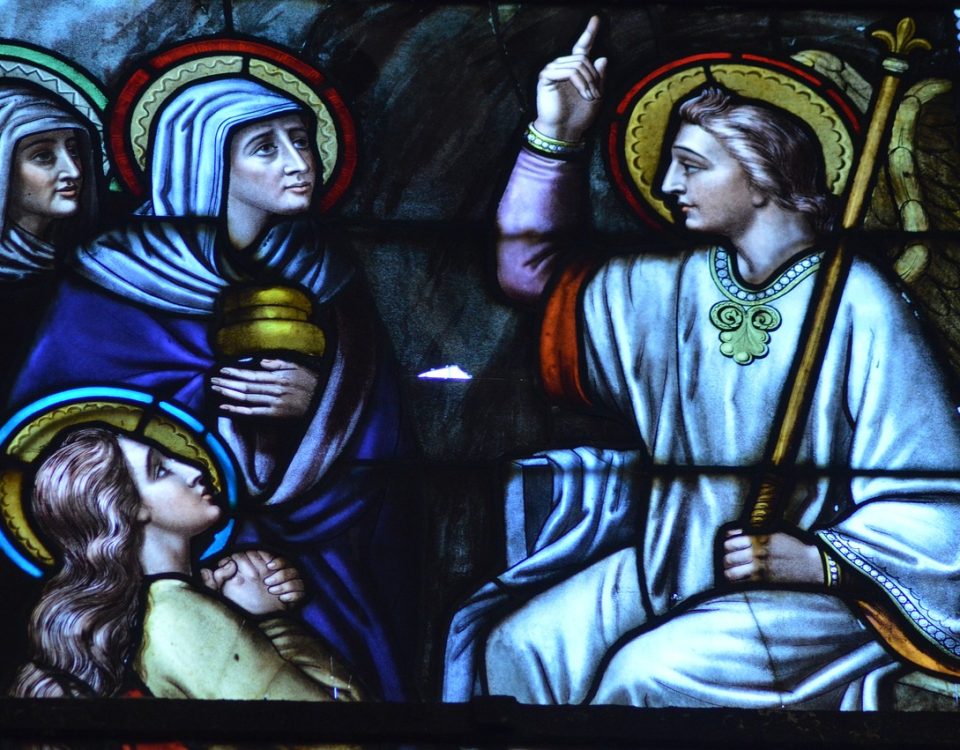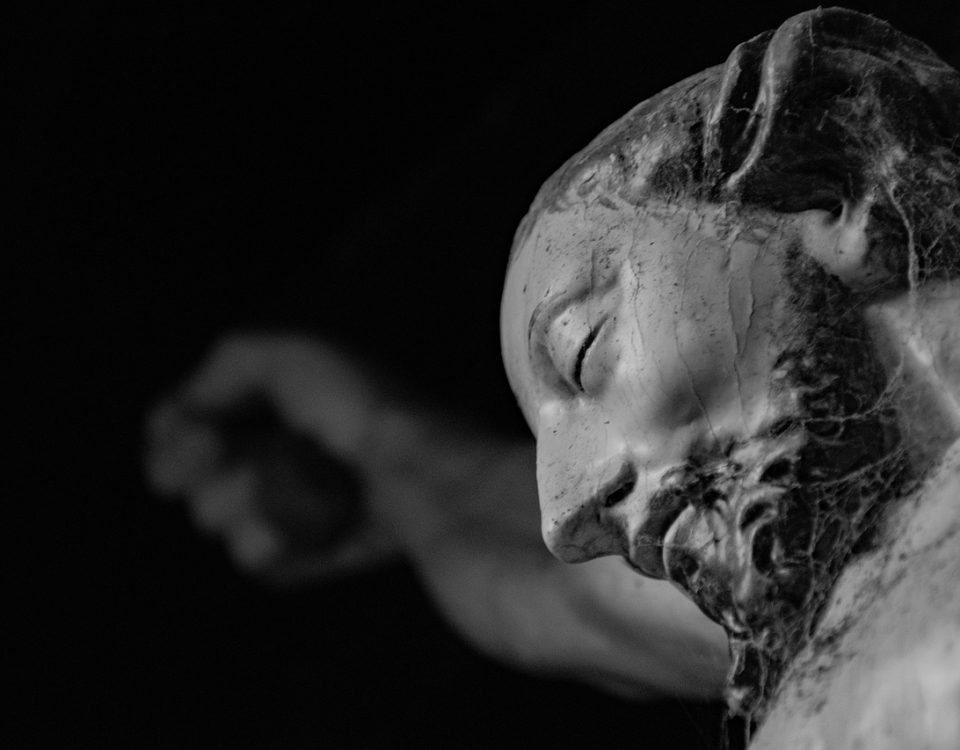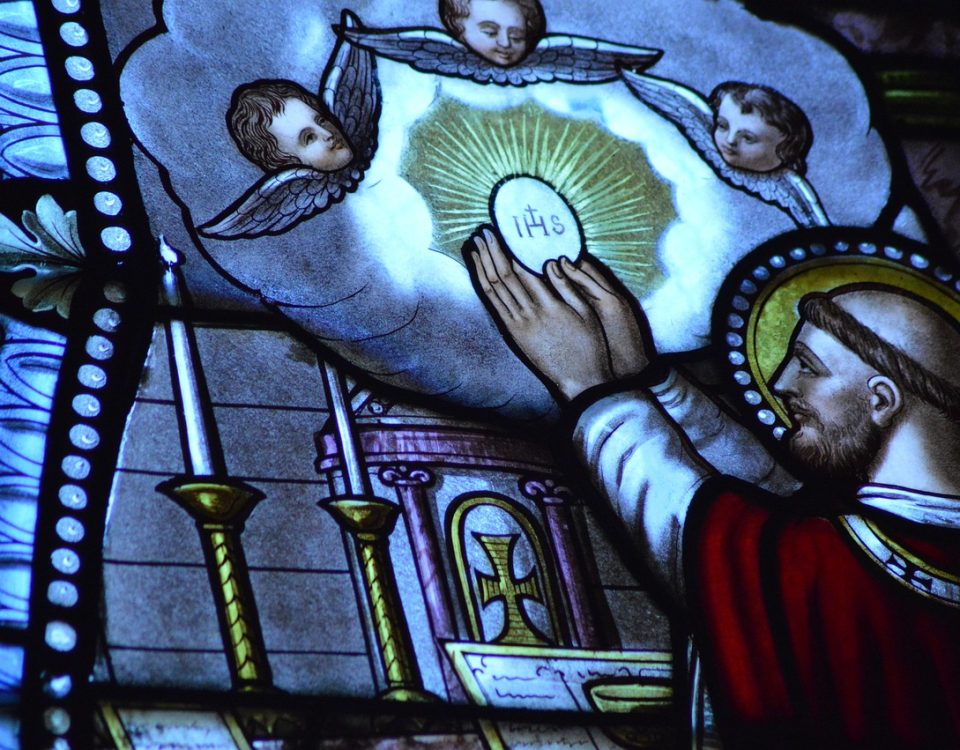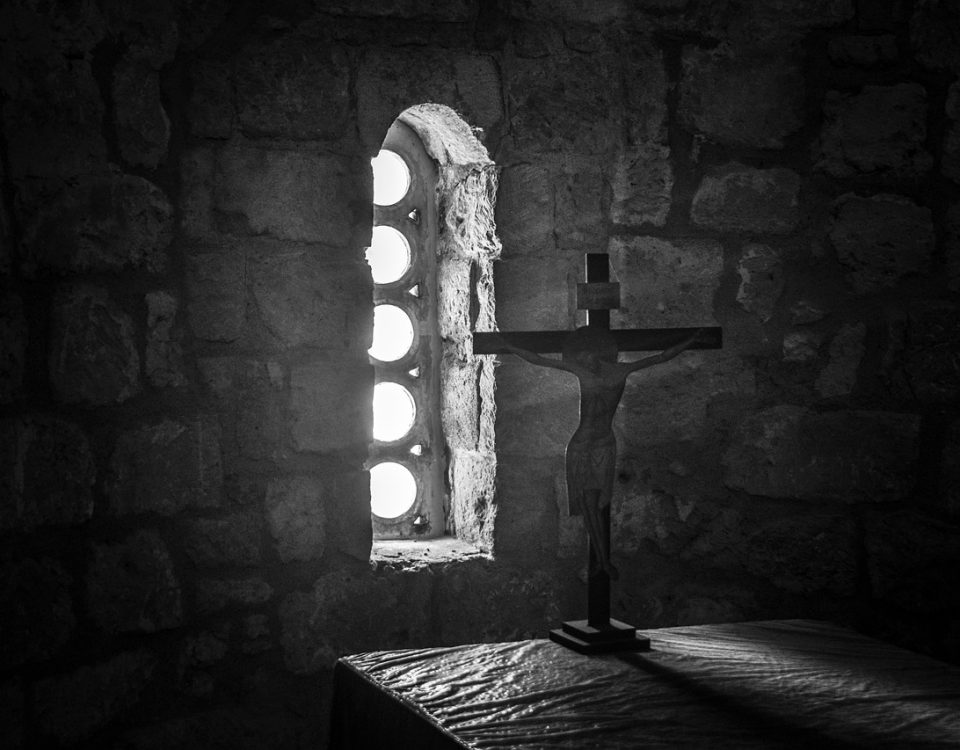Unsurprising Hope
“What surprises me, says God, is hope. And I can’t get over it.”
From Charles Péguy’s poem The Portal to the Mystery of Hope, it is what I think of when I think about hope: this idea that God finds it surprising. Faith is obvious, Péguy wrote, charity too. “But hope,” says God in his poem, “is something that surprises me. Even me.”
Hope is personified by a little girl in the poem. Faith is a “loyal Wife,” charity a “Mother.” Hope, though, is a small child, “a little girl, nothing at all.” And that’s because although “Faith sees only what is,” hope “sees what will be,” and while “Charity loves only what is,” hope “loves what will be.” Hope, always insignificant at its beginning, is fragile, faintly established, concerned with what is barely discernible. Hope is a young girl in Péguy’s poem because it’s a virtue which at first seems small and sometimes even pointless, at play, but which grows, survives and endures, finding its reward, nonetheless, against all odds. Which is why hope surprises God, because it is “by far the greatest marvel of our grace.”[1]
Hope is also a theme of Advent, theologically, naturally. It’s a season, to quote the Catechism of the Catholic Church, in which the “ancient expectancy of the Messiah” is presented afresh to the hearts of believers, and which renews, in turn, our desire for Christ’s coming again in glory.[2] It is a time, liturgically spoken and spiritually imbibed, focused upon what is at first small, only barely seen and felt: the faint quivering of conscience, the penitential beginning of salvation, flickering light in darkness, the birth of a child, quiet love within loud hate.
It is a familiar theme, a virtue we know, a word often used. Thoroughly biblical, hope belongs to the inflection of Christian faith, its grammar and vocabulary. Yet, hope is a word we often use without care. Detached and painted in kitsch pop art, rhymed and awkwardly fitted into hymns and songs of varying quality, hope is one of those words, as Newman said, which can be made to mean nothing.[3] Utterly over-familiar, we talk a lot about hope, but we don’t much feel it, the cultural-linguistic framework of hope (to use Lindbeck’s terminology) having broken down.[4] Hence, today it’s a word often associated with the hollowness of Christianity, another meaningless word from an assumed meaningless religion. Unlike the God of Péguy’s poem, we’re no longer surprised by hope. We’ve gotten over it, this forgotten marvel of grace.
Which is what’s so challenging for preachers today, that hope has become a byword, signifying anything and nothing. How, when we’re no longer surprised by hope, apathetic and often unresponsive to words of faith and the traditional idioms of Christianity, are preachers to speak of authentic hope which comes from the love poured into hearts by the gift the Holy Spirit (Romans 5:5)? By our Advent preaching, how can we make real the hope that is biblical and not merely trite, which is the gift of the word of God, living and life-changing? That is, how do we preach genuine hope?
Dangerous Biblical Hope
But what is hope, biblically? For preachers, it’s the first question.
Paul said we are saved in hope (Romans 8:24). Born of character, of endurance and suffering, hope is that ancient habit born of the election of the Hebrews, God’s “treasured possession” (Romans 5:3-4; Deuteronomy 7:6). Born of the promise made to Abraham that his descendants would outnumber the stars, hope is holding on to belief in God’s plan to redeem his own, a plan Paul called “irrevocable” (Romans 11:29).
It is redemption in which, in Christ, Gentiles are included. In Jesus, God’s chosen servant—Matthew argued from Isaiah—all “Gentiles will hope” (Isaiah 42:4 LXX; Matthew 12:21). Christians, by faith and the indwelling Spirit, share in Christ’s destiny, his resurrection from the dead now made ours (Romans 8:11). No longer subject to the futility of fallen creation, Christians struggle to live no longer “according to the flesh but according to the spirit” (Romans 8:4, 20). Our union and destiny in Christ is the theological beginning of hope. It is the motive of all our prayer and work, all our spiritual sighing and groaning for ourselves and for the whole of creation (Romans 8:22, 26). To say hope is theological is to claim that it is first about what God accomplishes in us, in the Church, that it belongs to the story of redemption. Hope names the habit of remaining faithful to that story, loving as Jesus taught, as we see it mystically and providentially unfold. It’s why the writer to the Hebrews called hope the “anchor of the soul,” pulling believers toward Christ, toward our pioneer high priest, to where he has gone already behind the veil (Hebrews 6:18-20).
To preach hope, therefore, is first to preach the story of Israel, Jesus, and the Church. From the moment God asked the man and woman hidden in the garden “Where are you?” to the promise made to Abraham and the opening wide of the arms of Jesus on the cross and to what John heard from the throne—“Behold, I make all things new”—hope, before anything else, is the story of what God has done for us since the beginning, the story of his love and our redemption (Genesis 3:9; Genesis 12:2-3; John 12:32; Revelation 21:5). Only then is it the habit of living within this unique story of grace, feeling it to be true and living every day as if it’s so, holding on to the story, remembering it’s a story which tells us as much as we tell it.
Preaching hope during Advent, then, it’s wise to make use of the lectionary, mindful of its place within liturgical time. That’s because the readings appointed for the Sundays of Advent lead us to Christ not only liturgically and memorially but also interiorly. Take, for example, readings from Matthew’s Gospel appointed for Year A. Respectively, the message is to “stay awake” (Matthew 24:42), to repent and prepare for the coming of the Lord (Matthew 3:2-3), to rejoice in the signs of the kingdom without taking offense (Matthew 11:4-6), and to hear finally that “God is with us” (Matthew 1:23). Experienced as lectio continua these passages not only recall the history of Jesus’s first coming, they also locate believers within the expectation of Christ’s other advents in their hearts and at the end of time. It’s to experience what St. Bernard of Clairvaux called in his Advent sermons Christ’s “threefold coming” and “threefold renewal.”[5]
But how do we preach this well? How do we make biblical hope relevant in the right way? It’s important to acknowledge the danger involved in preaching hope, remembering the many corruptions and abuses practiced and permitted in Christian history in the name of corrupted hope. Simply put, we must remember how dangerous hope can be when it becomes utopian. That is, when hope turns into mere dreaming of the future, of time or space beyond difficulty, violence, and suffering, then hope becomes problematic. And that’s because when we dream of paradise, we sometimes begin to see those who are not of the elect—those outside our group, outside our nation, outside our denomination, or simply outside our sense of morality—as enemies. We begin to dream about “us” without “them.” And sometimes we even begin to practice violence, or at least accept it, in order to achieve our selective heaven, without “them.” Thinking we’re in control of history, we think it’s our task to push it along, sometimes violently, toward our imagined destiny.
Both Daniel and John dreamed of the son of man, for instance, but they also both dreamed of fire and destruction, the praises of God mingled with the smoke of the damned (Daniel 7:13; Revelation 1:13; Revelation 19:3). Exegesis aside, hermeneutically and historically such imagery has lent itself to innumerable abuses and unquantifiable nonsense. To note just one example, from Kathryn Gin Lum’s book, Damned Nation, on the idea and use of the concept of hell in nineteenth century America: missionary societies and preachers often inspired and terrified their flocks and supporters with urgent pleas to do whatever possible to save “heathen” from eternal damnation. One missionary preacher, Ira Condit, for example, warned his listeners that they “should realize this unavoidable conclusion, that the heathen are sinking to eternal misery as fast as the scythe of death mows them down…vast hosts that crowd the caverns of hell.”[6] Dividing eternally “us” from “them,” it became a way of looking at the world which included not only the inhabitants of foreign lands but also backsliders, the immoral, and anyone who didn’t fit within conventional Protestant or Catholic life. In America, aside from whatever was once properly evangelical about the Great Awakening, such preaching spawned a broad moral taxonomy, making more than evangelical distinctions between “heathen” and “Christian,” the “saved” and the “damned,” all of it religiously coded othering.
Which brings into focus racism and classicism, ethnic prejudice, hatred, and other evils. Much of it well known, violent and horrible, these are the open wounds of our original sin, of what Dr. King called “man’s inhumanity to man.”[7] But, of course, it’s not just our more visible, egregious history which is the fruit of ruined hope, those crimes so spectacular and distant they’re safe for us to confess and disown. Much more is it the pathetic pettiness, the ignorant everyday othering of ordinary sinners which we must examine, confess, and amend. Mrs. Turpin, from Flannery O’Connor’s story, “Revelation,” is a good example. In her dreams she ranked different “classes of people.” African Americans were at the bottom, then “white trash” and then homeowners, landowners, and finally those just above her own station, the truly rich. “If it’s one thing I am, it’s grateful,” Mrs. Turpin said. “When I think who all I could have been besides myself…‘Thank you, Jesus, for making everything the way it is!’”[8] Such is the banal result of warped religious imagination, the ruined hope of the pathetic, like Mrs. Turpin. She illustrates the more ordinary danger involved in preaching hope, showing how it can go wrong, twisted by individual and collective pride. Imagining ourselves the elect, dreaming of some promised end, we ruin hope. Our violent history aside, this is more often what we see: pews full of the pathetic and self-righteous and judgmental, hope reduced to identity and pride. It’s why preachers ought to be careful preaching hope, when inspiring listeners to dream of a better world, beyond or renewed. Because it can inspire hate, but more often just pettiness. Which, as much as anything else, has made hope a byword for many and the world that much more deaf to the Gospel.
Thinking Little
So, again, how do we preach hope well? How do we avoid various millenarian hazards so dangerous and pathetic? It is, of course, impossible to erase election and eschatology from theology, to reduce tensions between the “already” and the “not yet.” To do that, ultimately, would be to follow the counsel of atheism, that if we only rid ourselves of ideas of heaven and hell, all those primitive dreams of God’s promises, and maybe God too, then finally we would discover the true remit of hope, the here and now.
But that would eliminate hope, not change it for the better. And that’s because, for Christians, hope necessarily is about things “not seen” (Hebrews 11:1). Its object, Thomas Aquinas put succinctly, is “a future good.”[9] It is out of the question, if it’s to remain Christian, that theology and preaching should let go of that which is beyond, dreams of heaven and the proper fear of judgement and hell. Hope must, if it’s to remain a Christian virtue, yearn for its object, its promised end. But how do we keep it from souring, from becoming hate?
By learning to “think little,” to put it the way Wendell Berry did, advice more profound than it may at first seem.[10] To think big, we must think small. It belongs to the paradox of hope, no less the other virtues too, that heaven and earth is so often found in little space. C. S. Lewis wrote that the supernatural is “as intimate as breathing.”[11] This is wisdom at once moral and theological but also plainly human, that the particular mediates the universal, that the transcendent is intimate, that God is close.
The nuptial bliss which blesses spouses, for example, is born only in intimacy. One doesn’t fall in love with an abstract wife or husband or with the idea of marriage; one falls in love with a particular spouse by means of some strange, unique love story. That’s how one experiences the transcendent blessings of marriage, intimately. To share the genuine happiness of marriage, one must “think little,” living faithfully the small everyday joys and virtues of married life. The same is true of our experience of God. To see Jesus is to see the Father (John 14:9). He is the image of the invisible God (Colossians 1:15). In him the Word became flesh (John 1:14). John leaned his head upon God’s breast; Mary Magdalene heard him whisper her name (John 13:23; 20:16). By means of incarnation, sacrament, and prayer, we “think little,” yet by it we encounter the divine infinite, the universal in the particular. To think about this ethically is to understand, as Aristotle taught, that virtue is best cultivated within the polis, that things like friendship “involves community.”[12] That is, only among people with a particular narrative, with their own unique goods and commitments, is virtue possible. It’s why Aristotle put such store by things like apprenticeship, because excellence can only be measured within a set of practices unique to a particular craft, in turn intelligible only within a particular community.[13] Spiritually, morally, ethically, the point is the same: virtue’s context is always particular and intimate. It is never abstract, never without roots or narrative. The framework of virtue is always, in some sense, small, never beyond limited human measure. Like politics, hope is local.
But it’s about more than thinking little or about remembering the cultural-linguistic frame. Here, within intimacy, within limited measured space, between faces in relationship, genuine hope finally comes into view. Christian hope, which keeps hold of the eschaton, but unruined, is found in small spaces such as these: between people, in families, in the Church. Here is where authentic hope is practiced and discovered, where God acts within our acts and where we become pilgrims instead of planners, where hope remains a habit and not just another name for selfish desire.
It is what Gabriel Marcel was getting at when he spoke of hope in terms of the “creative vow.” Beginning his reflection intimately, that is, rooted in a phenomenology of the subject, Marcel’s work gets to the very heart of hope. He begins with the simple claim that the human person is discoverable only in relation to other persons: “I establish myself as a person in so far as I really believe in the existence of others and allow this belief to influence my conduct.”[14] Experienced first in the womb and in a child’s experience of her own parents, in those intimate relations the self is first discovered. And it is by continuing such relations responsibly, Marcel suggested, that we discover what hope really is. A child discovers herself in relation to her parents; her parents discover themselves, as parents, in relation to her. This, for Marcel, is the birth and growth of the ego, an experience replicated throughout a person’s life in various relations and which continuously sustains the self. Pure individualism, solipsism, Marcel believed, refused reality. And so, in healthy moral and psychological life each person owes to each what he called “availability” and “engagement,” that is, unmanipulated openness. This is the “creative vow,” to remain faithful and responsible to the relations, the people, in our lives that make us who we are.
This, Marcel argued, is the act of hope itself: “the availability of the soul which has entered intimately enough into the experience of communion to accomplish in the teeth of will and knowledge the transcendent act—the act of establishing the vital regeneration of which this experience affords both the pledge and the first-fruits.”[15] Being faithful to the people in our lives, open to them but without manipulation, without coercion, is what hope is. And what makes it hope, and not just fidelity, is that it is a “transcendent act,” unforcefully open to a future only available as a gift, and not in isolation but in communion. This is why Marcel called hope creative and why Péguy lyricized hope as a small girl, because it is an act by which a person places oneself “at the disposal of something which, no doubt depends upon him for its existence, but which at the same time appears to him to be beyond what he is and what he judged himself capable of drawing directly and immediately from himself.”[16] Such is how to make one’s way to heaven, to anticipate the eschaton but without violence, by understanding that hope consists in “never hustling or being rough with another person,” but in “placing our confidence in a certain process of growth and development.”[17] This is how one keeps election and eschatology within theology and preaching without ruining it, by remembering the peacefulness of hope. By understanding, as Marcel did, that hope is essentially fidelity in an unbroken relationship across time and space, the act of trusting others while at the same time trusting the narrative, remaining in communion and in faith no matter the changes and chances of this fleeting world.
Preaching Intimate Hope
So what does this mean for preachers at Advent? What does it mean for how we speak the Gospel’s message of hope? To return to the poet Charles Péguy: “What matters is to go simply in the simple procession of ordinary days.”[18] That is, preaching hope in Advent, as any time, isn’t so much about plying the faithful with dreams and visions but about helping them rediscover hope as faithfulness to others and to community, helping them to see that’s how God works.
That is, we should preach intimate hope, remembering the primeval wisdom of it. From God whispering in Elijah’s ear to the intimacy of table fellowship between Jesus and his disciples (1 Kings 19:12; John 14:9); from Abba Moses’s saying that “your cell will teaching you everything” to Saint Benedict’s instinct that holiness is best worked out in the “enclosure of the monastery and stability in community,”[19] real hope has always been a virtue lived within the limited confines of human relationships and community. And it’s from there we should preach, within these smaller, nearer places.
Our task is to help listeners discover what Kathleen Norris called the “quotidian mysteries,” seeing that our “greatest spiritual blessings are likely to reveal themselves not in exotic settings but in everyday tasks and trials.”[20] For Norris, this meant finding strength and grace in the rhythms and repetition of prayer and in caring for her dying husband. Anne Lamott is another writer who describes beautifully the sort of hope worth preaching, exemplifying what Marcel meant by creative fidelity. Her faith journey, she writes at the start of her memoir Travel Mercies, was like staggering “from what seemed like one safe place to another,” like jumping from one lily pad to the next. Following less any sort of clear vision, Lamott’s journey is winding, unorthodox but beautiful. Faithful to friends, faithful to her son, open to strangers, her story shows what finding God in faithfulness to others, what thinking little, looks like. Her story shows how “when you need to feel the all-embracing nature of God, paradoxically you need to hang out in ordinariness, in daily ritual and comfort.”[21] These are the sorts of stories and experiences preachers should discover and share. From the storehouses of our experiences, from our communities, we should mine for the hope that is close and real. Because it’s the hope which is genuine and tangible and which our listeners already know, but which we preachers are privileged to name.
And because it’s the sort of preaching which prepares us to see, in a mystical way, our small infant God. It helps us to understand what Augustine meant, preaching once at Christmas: “Here we have the infant Christ—let us grow with Him.”[22] That is, preaching genuine hope helps us become people of hope, people loving and humble enough to see how God is at work today in our lives, in both light and shadow. It helps us become people able to see now, and not only in the fullness of time, “the appearing of the glory of our great God and Savior Jesus Christ” (Titus 2:13). Which is the preacher’s task.
This essay originally appeared in the Advent 2019 issue of the Journal for Preachers.
[1] Charles Péguy, The Portal of the Mystery of Hope (Grand Rapids: Eerdmans, 1996), 6-7.
[2] Catechism of the Catholic Church (Washington DC: Libreria Editrice Vaticana, 2007), §524.
[3] John Henry Newman, The Idea of a University (Notre Dame: University of Notre Dame Press, 1982), 28.
[4] George Lindbeck, The Nature of Doctrine (Louisville: Westminster John Knox Press, 1984), 33.
[5] Bernard of Clairvaux, Sermons for Advent and the Christmas Season (Kalamazoo: Cistercian, 2007), 33. See particularly Sermons 4-6.
[6] Kathryn Gin Lum, Damned Nation: Hell in America from the Revolution to Reconstruction (Oxford: Oxford University Press, 2017), 68.
[7] Martin Luther King, Jr., A Knock at Midnight (New York: Warner Books), 167.
[8] Flannery O’Connor, “Revelation,” The Complete Stories of Flannery O’Connor (New York: Farrar, Straus and Giroux, 1972), 491.
[9] Thomas Aquinas, Summa Theologiae II-II 17.1.
[10] The World-Ending Fire: The Essential Wendell Berry (Berkeley: Counterpoint, 2017), 48-58.
[11] C. S. Lewis, Miracles (San Francisco: HarperCollins, 2001), 65.
[12] Aristotle, Nicomachean Ethics (Indianapolis: Hackett, 2007), 1159b.
[13] Ibid., 1103a-1103b.
[14] Gabriel Marcel, Homo Viator (New York: Harper & Row, 1962), 22.
[15] Ibid., 67.
[16] Ibid., 25.
[17] Ibid., 39-40.
[18] The Portal of the Mystery of Hope, 117.
[19] John Wortley, Give Me a Word: The Alphabetical Sayings of the Desert Fathers (Yonkers, NY: St. Vladimir’s Seminary Press, 2014), 195. The Rule of Benedict (Collegeville: Liturgical Press, 2016), 86.
[20] Kathleen Norris, Acedia & Me: A Marriage, Monks, and a Writer’s Life (London: Penguin, 2008), 190.
[21] Anne Lamott, Traveling Mercies: Some Thoughts on Faith (New York: Anchor Books, 1999), 3, 167.
[22] Augustine, Sermons for Christmas and Epiphany (London: Longmans, Green and Co., 1952), Sermon 14.2, 133.
© 2019 Rev. Joshua J. Whitfield




